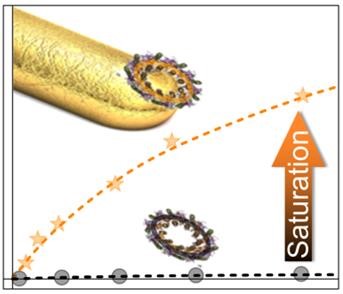20 April 2016
It is an often-told story that plasmonic antennas do enhance excitation, decay rates and quantum efficiency. True, the emission of molecules and Q-dots can be enhanced 100-1000 times. Yet in practice the enhanced emission rapidly touches a saturation limit due to the time a molecule spends in Singlet and especially Triplet excited states, and moreover is terminated by photodissociation. The saturation limited photon stream restricts the maximal attainable enhancement.
Now, Emilie Wientjes and colleagues of the Molecular NanoPhotonics group led by ICREA professor Niek van Hulst have challenged this photon limit, showing that nanoantennas can actually increase both saturation intensity and photo-stability. Specifically they demonstrate that single light-harvesting complexes, under saturating excitation conditions, show over a 50-fold antenna enhanced photon emission stream, with 10-fold more total photons, up to 108 detected photons, before photo-bleaching. This work, published in J. Phys. Chem. Lett., shows yet another facet of the great potential of nanoantennas in the world of single molecule biology.

More Photons!
Nanoantennas shift saturation and bleaching limits.

Saturation enhancement of a light-harvesting complex













